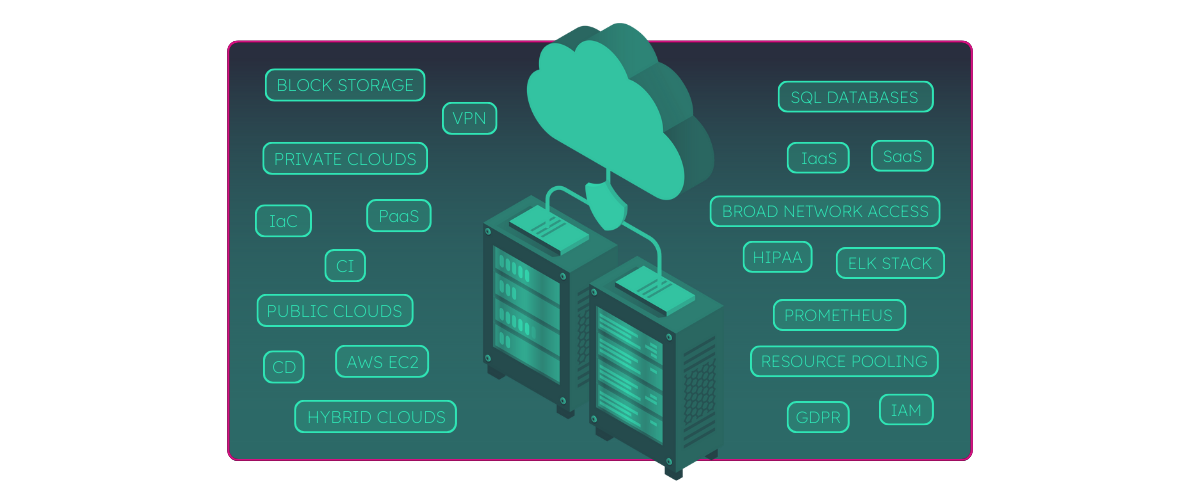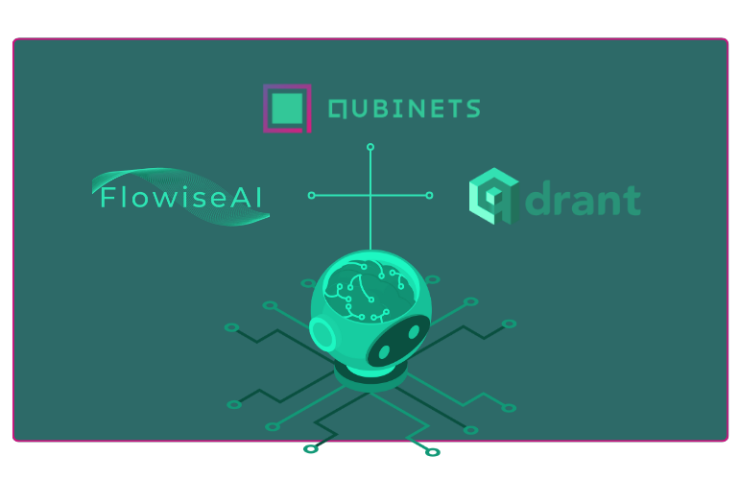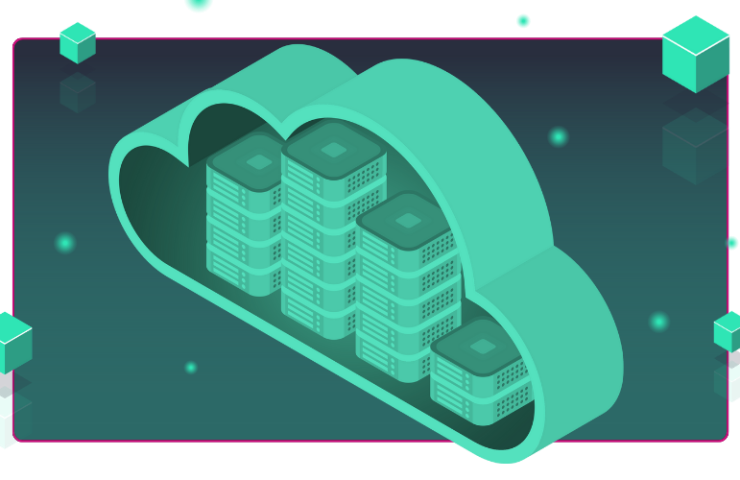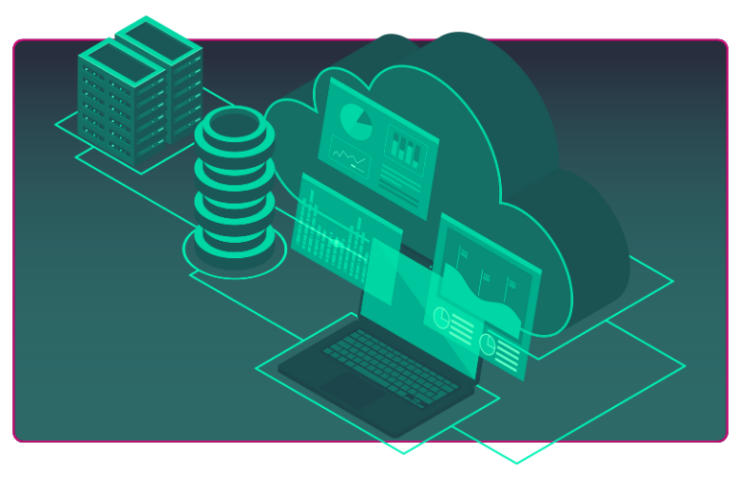Cloud infrastructure forms the backbone of modern computing, enabling businesses to store, manage, and process data over the Internet. Rather than relying on physical servers, you can take advantage of scalable and flexible resources offered by cloud providers. This shift to cloud-based solutions allows for greater efficiency, cost savings, and the ability to quickly adapt to changing demands.
If you work with cloud environments, grasping cloud-related terminology becomes vital. Terms like IaaS, PaaS, and SaaS are commonly used and they define the different service models in the cloud landscape. Understanding these terms ensures you can communicate effectively, configure systems correctly, and decide which cloud services best fit your needs.
Recognizing key cloud infrastructure terms not only improves your technical skills but also increases your capability to collaborate with others in the industry. Knowing the language of cloud computing helps you stay up-to-date with the latest developments and leverage the full potential of cloud technologies. Armed with this knowledge, you’ll be able to effortlessly handle the complexities of cloud environments with a cheerful spirit!
Cloud Computing Basics
Core Components
Cloud computing has three main characteristics: on-demand self-service, where you can provision resources without human interaction; broad network access, allowing access over the internet; and resource pooling, with resources shared among multiple users.
Public clouds like Amazon Web Services (AWS) offer services over the public internet. Private clouds are dedicated to a single organization and provide greater control. Hybrid clouds combine both, allowing data and applications to be shared between them.
Cloud Infrastructure Terms
Infrastructure as a Service (IaaS) gives you control over IT resources such as servers and storage. Examples include AWS EC2 and Google Compute Engine. You manage the OS and applications while the provider handles the infrastructure.
Platform as a Service (PaaS) provides a platform allowing you to develop, run, and manage applications without dealing with infrastructure. Examples are Google App Engine and Microsoft Azure App Service.
Software as a Service (SaaS) delivers software over the internet. Examples are Google Workspace and Microsoft 365. This model lets you use the applications without worrying about their maintenance or infrastructure.
Networking and Storage Fundamentals
Understanding networking and storage is crucial for managing cloud infrastructure effectively. This section covers essential networking terms and explores different types of cloud storage and databases.
Networking Terms
A Virtual Private Network (VPN) connects your devices securely to the internet, encrypting data and protecting it from unauthorized access. VPNs are especially useful for connecting remote employees to the company’s internal network.
Firewalls act as barriers that protect your cloud infrastructure from malicious access. They monitor and control incoming and outgoing network traffic based on security rules. Firewalls can be hardware-based, software-based, or both.
Identity and Access Management (IAM) tools are essential for controlling who has access to your cloud environment. IAM ensures that only authorized users can perform specific actions within the cloud infrastructure. IAM policies can control access on a granular level, ranging from specific users to groups of users.
Storage and Databases
Block Storage stores data in fixed-sized blocks, providing fast access and is ideal for databases. Examples include Amazon Elastic Block Store (EBS).
Object Storage manages data as objects, suitable for storing unstructured data like media files. Common examples are Amazon S3 and Google Cloud Storage.
File Storage organizes data in a hierarchical structure. It is good for shared storage environments. Examples include Amazon EFS and Google Cloud Filestore.
SQL Databases are relational databases that use a structured query language for managing data. Examples are MySQL, PostgreSQL, and Oracle Database.
NoSQL Databases manage non-relational data, providing flexibility and scalability. Examples include MongoDB, Cassandra, and DynamoDB.
Security Principles
When working with cloud infrastructure, focusing on security and compliance is important. Key principles include encryption and adherence to standards like GDPR and HIPAA.
Security
Security in cloud infrastructure aims to protect data and applications. Encryption is crucial for this. Encryption at rest means protecting data stored on disks or databases. Encryption in transit secures data as it travels between users and servers.
Another important principle is access control. This includes methods like multi-factor authentication (MFA) and role-based access control (RBAC) to ensure only authorized users can access sensitive information.
Keep software updated and regularly apply security patches to avoid vulnerabilities. Network security involves firewalls, VPNs, and intrusion detection systems to monitor and protect cloud environments.
Compliance
Compliance involves following regulations and standards to protect data. GDPR (General Data Protection Regulation) is an EU regulation focusing on data privacy and protection. HIPAA (Health Insurance Portability and Accountability Act) protects health information in the US.
To stay compliant, you must maintain data residency requirements, ensuring data is stored in specific locations. Regular audits and assessments help verify compliance.
Documentation of compliance policies and regular training are also critical. This helps your team understand and follow best practices for data protection and privacy.
DevOps Integration
Integrating DevOps practices into cloud environments involves using tools and methods to automate and streamline operations. Key areas are CI/CD, Infrastructure as Code (IaC), and monitoring and logging solutions.
DevOps and Automation
Automation is crucial in DevOps for more efficient and reliable deployments. Continuous Integration (CI) and Continuous Deployment (CD) help you deploy code changes automatically and frequently, minimizing manual intervention and speeding up the release process.
Infrastructure as Code (IaC) tools like Terraform and AWS CloudFormation allow you to manage cloud resources using code. This makes it easier to duplicate environments and maintain consistency.
Monitoring and logging solutions like Prometheus and ELK Stack help you monitor the health of your cloud infrastructure. They alert you to issues and provide insights for improvement.
Using these tools together ensures smoother operations and better resource management.





